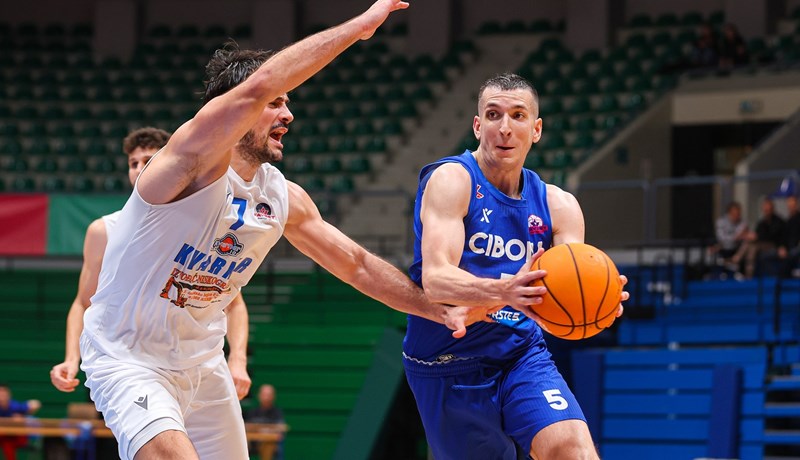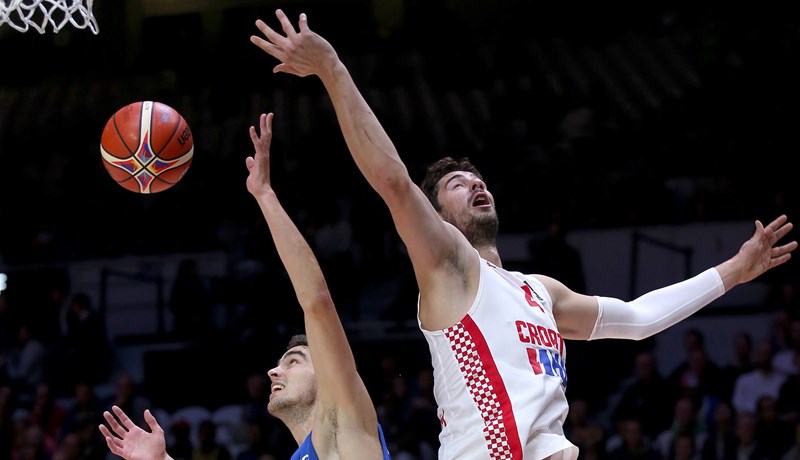"Fizicka priprema kosarkasa"
A jebiga, nisam te mislio uvrijediti, nego ocrtati kako su mene naucili da dobijem sto je vise iz rasprave - a bilo je takvih poucaka koliko hoces,
Naprimjer kada sam jednog renomiranog australskog coach-a pitao nesto zapocevsi pitanje sa "Nije li..." a dobio odgovor u stilu - "Je li to pitanje ili tvrdnja jadno zamaskirana kao pitanje?" I jos, "Ako mislis ovdje nesto nauciti, bolje bi bilo da razmislis kako uopce postaviti pitanje." i to pred kakvih 50 ljudi.
Onda kipis pola sata, ali nakon nekog vremena shvatis poantu, doista, ako u nesto nisi siguran (a vrlo je malo "cinjenica" u zivotu u koje treba biti "siguran"), vjerojatno je bolje u pocetku postaviti stvari malo fleksibilnije, jer tako ima prostora za ucenje.
Ja obozavam rijeci poput "mozda" i "vjerojatno" upravo zato sto ostavljaju prostora drugim misljenjima.
A onda mozemo lako raspravljati o svemu., bez da se itko uvrijedi.
Sto se tice Verkoshanskog, vidis, sad kad si objasnio, kako si dosao do zakljucka (sto je izvrsno),moglo bi to biti pitanje njegove metodologije (kako on definira pojam eksplozivna snaga i da li u nju mozda ukljucuje i SSC) ili mozda prijevoda s ruskog. Ja sam njegov i Siffov Supertraining citao jako davno.
Sto se tice maksimalne snage, zamisli powerliftera - znaci sposobnost dizanja ogromne tezine gdje tradicionalno brzina dizanja nije bitna.
Potom explozivna snaga, zamisli olimpijskog dizaca utega - koji mora ubrzati sipku sto je vise moguce da bi zavrsila iznad glave ili na ramenima.
Pa onda kad ih pitas da skoce i pritom ponistis svu elasticnu energiju (zamolis ih da pauziraju u cucnju kakvih 4 sekunde), opet ce olimpijac vrlo vjerojatno imati kud i kamo visi odraz.
Naprimjer kada sam jednog renomiranog australskog coach-a pitao nesto zapocevsi pitanje sa "Nije li..." a dobio odgovor u stilu - "Je li to pitanje ili tvrdnja jadno zamaskirana kao pitanje?" I jos, "Ako mislis ovdje nesto nauciti, bolje bi bilo da razmislis kako uopce postaviti pitanje." i to pred kakvih 50 ljudi.
Onda kipis pola sata, ali nakon nekog vremena shvatis poantu, doista, ako u nesto nisi siguran (a vrlo je malo "cinjenica" u zivotu u koje treba biti "siguran"), vjerojatno je bolje u pocetku postaviti stvari malo fleksibilnije, jer tako ima prostora za ucenje.
Ja obozavam rijeci poput "mozda" i "vjerojatno" upravo zato sto ostavljaju prostora drugim misljenjima.
A onda mozemo lako raspravljati o svemu., bez da se itko uvrijedi.
Sto se tice Verkoshanskog, vidis, sad kad si objasnio, kako si dosao do zakljucka (sto je izvrsno),moglo bi to biti pitanje njegove metodologije (kako on definira pojam eksplozivna snaga i da li u nju mozda ukljucuje i SSC) ili mozda prijevoda s ruskog. Ja sam njegov i Siffov Supertraining citao jako davno.
Sto se tice maksimalne snage, zamisli powerliftera - znaci sposobnost dizanja ogromne tezine gdje tradicionalno brzina dizanja nije bitna.
Potom explozivna snaga, zamisli olimpijskog dizaca utega - koji mora ubrzati sipku sto je vise moguce da bi zavrsila iznad glave ili na ramenima.
Pa onda kad ih pitas da skoce i pritom ponistis svu elasticnu energiju (zamolis ih da pauziraju u cucnju kakvih 4 sekunde), opet ce olimpijac vrlo vjerojatno imati kud i kamo visi odraz.
A black cat crossing your path signifies that the animal is going somewhere
Oggie je napisao/la:
A jebiga, nisam te mislio uvrijediti, nego ocrtati kako su mene naucili da dobijem sto je vise iz rasprave - a bilo je takvih poucaka koliko hoces, Naprimjer kada sam jednog renomiranog australskog coach-a pitao nesto zapocevsi pitanje sa "Nije li..." a dobio odgovor u stilu - "Je li to pitanje ili tvrdnja jadno zamaskirana kao pitanje?" I jos, "Ako mislis ovdje nesto nauciti, bolje bi bilo da razmislis kako uopce postaviti pitanje." i to pred kakvih 50 ljudi.
Onda kipis pola sata, ali nakon nekog vremena shvatis poantu, doista, ako u nesto nisi siguran (a vrlo je malo "cinjenica" u zivotu u koje treba biti "siguran"), vjerojatno je bolje u pocetku postaviti stvari malo fleksibilnije, jer tako ima prostora za ucenje.
Ja obozavam rijeci poput "mozda" i "vjerojatno" upravo zato sto ostavljaju prostora drugim misljenjima.
A onda mozemo lako raspravljati o svemu., bez da se itko uvrijedi.
Vidi cijeli citat
Sve stoji, ali ovo je forumski nacin pisanja na brzinu. Da je znanstveni clanak pisao bi mozda, u granici eksperimenta...itd. Nijednim upisom nisam mislio reci da znam vise od nekoga ili nekoga demantirati ili pisati apsolutno. Zao mi je sto je tako shvaceno.
Oggie je napisao/la:
Sto se tice Verkoshanskog, vidis, sad kad si objasnio, kako si dosao do zakljucka (sto je izvrsno),moglo bi to biti pitanje njegove metodologije (kako on definira pojam eksplozivna snaga i da li u nju mozda ukljucuje i SSC) ili mozda prijevoda s ruskog. Ja sam njegov i Siffov Supertraining citao jako davno.
Vidi cijeli citat
Koliko se sjecam, dijeli snagu na maksimalnu, eksplozivnu i starting (startnu?). Starting definira kao brzinu (slope) kojom se dostize maksimalna snaga. Za usporedbu maks i eksplozvne snage koristi se usporedba skoka bez elasticnog efekta i sa, redom.
Oggie je napisao/la:
Sto se tice maksimalne snage, zamisli powerliftera - znaci sposobnost dizanja ogromne tezine gdje tradicionalno brzina dizanja nije bitna.
Potom explozivna snaga, zamisli olimpijskog dizaca utega - koji mora ubrzati sipku sto je vise moguce da bi zavrsila iznad glave ili na ramenima.
Pa onda kad ih pitas da skoce i pritom ponistis svu elasticnu energiju (zamolis ih da pauziraju u cucnju kakvih 4 sekunde), opet ce olimpijac vrlo vjerojatno imati kud i kamo visi odraz.
Vidi cijeli citat
Shvacam sto mislis. Medjutim, nije li i za powerliftere i olimpijske dizace jednako vazna i maks snaga i ekplozivna. Jedina razlika je mehanika vjezbe, i sipka kod squata se krece maksimalnom brzinom za tu tezinu, dok kod jerka i snatcha zbog veceg ROM-a je potrebna veca brzina, a snaga ovisi o fazi vjezbe. I powerlifteri rade eksplozivnost (westside, tate, simmons...) Uglavnom, bilo bi zanimljivo vidjeti testiranja za te dvije populacije.
Sve 5.
A sto se tice powerliftinga, zato i rekoh "tradicionalno", jer Americke struja oko Simmonsa jest pocela vise inkorporirati brzinu u dizanje relativno nedavno gledajuci povijest sporta. A kada usporedujemo sa olimpijskim, opet pricamo o kontinuumu i prosjecima, ali upravo zbog duljeg puta sipke, olimpijsko ce imati prednost u explozivnosti.
A sto se tice powerliftinga, zato i rekoh "tradicionalno", jer Americke struja oko Simmonsa jest pocela vise inkorporirati brzinu u dizanje relativno nedavno gledajuci povijest sporta. A kada usporedujemo sa olimpijskim, opet pricamo o kontinuumu i prosjecima, ali upravo zbog duljeg puta sipke, olimpijsko ce imati prednost u explozivnosti.
A black cat crossing your path signifies that the animal is going somewhere
Oggie je napisao/la:
Hvala Fico - za pocetak sam iskopao statistike naseg najveceg fizikalca Radosevica i usporedio ih sa nekoliko njegovih istaknutih kolega iz NBA, samo iz ciste zabave. Rezultati poprilicno iznenadujuci.|
IME |
Visina (bos) |
Raspon ruku |
Doseg (stojeci) |
Skok 1 |
Skok 2 |
Max doseg (skok) |
|
D. Howard |
209 |
225 |
283 |
77.5 |
90.2 |
366 |
|
A. Stoudemire |
204.5 |
218 |
276 |
81 |
90.2 |
366 |
|
B. Griffin |
204.5 |
211.5 |
267 |
81 |
90.2 |
357 |
|
L. Radosevic |
204 |
213 |
268 |
68.8 |
90.7 |
359 |
Svi rezultati su u cm i gdje prakticno zaokruzeni na najblizi centimetar. Skok 1 je skok iz mjesta, a Skok 2 sa dodatnim korakom.
Upozorenje - ne znam u kojim uvjetima su uzimani podaci (npr. da li su za Radosevica slani iz Hrvatske itd) pa su netocnosti moguce.
Podaci za Leona su iz 2011, Howarda iz 2004, Amarea 2002, Griffina iz 2009, sto znaci da su se tokom godina mogli prilicno mijenjati.
Vidi cijeli citat
addidasov kamp u italiji
http://www.strengthandconditioningresearch.com/2013/03/11/sprinters/
They also concluded that the powerlifters, Olympic lifters and sprinters were similarly strong, that the Olympic lifters and sprinters were similarly capable of jumping high, and that the Olympic lifters were capable of the highest power outputs.
Prilicno porazno za powerliftere unatoc ogranicenjima.
- The powerlifters likely underperformed significantly in the Smith-machine squat, on account of the higher bar position that they were required to use, which prevented them from maximizing hip extension torque and also provided the Olympic lifters and sprinters with an advantage insofar as they were more familiar with the movement.
- The powerlifters were likely disadvantaged in that their natural movement is more hip-dominant and therefore when being tested in jumping tests that involved a knee-dominant pattern, they likely underperformed compared to the Olympic lifters who were used to knee-dominant actions. Testing with a hex-bar deadlift jump squat or sub-maximal deadlift would likely have demonstrated slightly more beneficial results for the powerlifters
To Jump Higher You Gotta Get Powerful
Power = Strength x Speed
In the vertical jump, you can again think of power as the amount of force you put into the ground at toe-off, which is responsible for the speed at which you leave the ground and the ultimate height of your jump. The more power you apply with respect to your bodyweight, the higher you're going to jump - And with respect to technique - that's about all there is to it to get you jumping higher!
Time Of Force Application
Realize in the vertical jump you only have about .20 to .40 seconds to apply max power and jump as high as possible. This is why the ability to jump high and the ability to accelerate quickly have such a good correlation.
Strength Qualities
In order to display optimal levels of power so that you can jump higher then you ever imagined, you obviously must have good levels of strength and speed. This is influenced by the following strength qualities.
Limit Strength- This is the amount of force you can apply irrespective of time. Limit strength can also be thought of as the strength of your muscles when speed of movement is of little consequence. Lifting maximal weights such as performing a 1 repetition max in the bench press or squat will test your limit strength capacity.
Attention should be paid to developing limit strength in the muscles of the quadriceps, glutes, hamstrings and lower back as these are the most important muscle groups for sprinting and jumping. These are your "jump higher and run faster" muscles. The muscles of the hip extensors should be given special attention because they are usually the weak links in the large majority of athletes. These muscles are the glutes, hamstrings, and lower back.
Explosive Strength- Refers to the ability to develop max force in minimal time without the use of the plyometric stretch-reflex. Jumping from a paused position and sprinting out of the blocks both require nearly pure explosive strength because you don't have the luxury of winding up and utilizing plyometric ability like you would if you took a big run-up before jumping, or a lead-in to a sprint.
Explosive strength relies on starting strength, which is the ability to "turn on" as much force as possible in the first .03 seconds of movement.
In order to develop maximal force in minimal time you obviously must have enough raw force or strength to draw from or to tap into quickly. This is why limit strength serves as the foundation for explosive strength. A rocket with a 5 HP motor isn't going anywhere! Likewise, an athlete who can only apply 100 lbs of force isn't gonna be jumping very high either regardless of how fast he applies that force.
Reactive strength- Is displayed when your muscle/tendon complex is stretched prior to contracting and is otherwise known as plyometric strength, reversal strength, reflexive strength, rebound strength etc. This type of strength is evident when you perform a quick countermovement (bend down) before jumping. You can jump higher that way then you can by pausing and then trying to jump can't you? Here's why. The countermovement quickly stretches the tendons throughout your lower body. This allows your muscles and tendons to gather energy and create recoil like a rubber band. This reflexive/reactive response occurs very quickly whereas a voluntary response to muscle stretch would be too late. Reactive ability enhances the force you can generate in the first .10 seconds of movement by anywhere from 200-700%!
With each stride and foot contact of a sprint the same thing happens as your achilles tendon stretches and recoils back like a spring or rubber band. The stretching reflex responds to the speed at which your muscle/tendon complex is stretched prior to movement. Try to very, very slowly bend down before jumping and you'll see what I mean. The faster and greater the stretch the greater the corresponding reactive force. This is why you'll notice people who are excellent jumpers descend down quickly and sharp in their countermovement. They create greater force in one direction, that can then be transformed into force in the other direction as they explode up with a powerful jump. When your reactive ability is good, the more force you can take in, the more force you can put out. Guys with subpar leaping ability have a hard time utilizing reactive force in the hips and quads so they don't perform the countermovement with near the velocity, smoothness, and proficiency. Fortunately this can be improved.
Jumping High and Running Fast are Largely Involuntary Activities
Most of the force generated from reactive contractions is involuntary, that is, you don't have to think about it. This is why you can bounce a lot more weight when doing a bench press then you can whenever you pause a maximum weight on your chest before lifting it - even without really trying to. It's also why you jump higher when you "bounce" down and then up. We tend to use reactive force naturally whenever we are given the opportunity to do so and do it without thinking about it. In fact, one of the ways you can improve reactive ability is simply to avoid screwing it up. It's there naturally and all training should enhance it and not detract from it. One of the ways you can screw it up is with bodybuilding style training - which basically teaches your body to do the reverse of what it's programmed to do. This is going to go against what you've heard but cheating, bouncing, and accelerating a weight through the sticking point are all natural occurances and utilize and enhance reactive ability. You can detract from this with an over-reliance on prolonged eccentric training and slow training.
How to Jump Higher - In a Nutshell
So, to quickly recap, the power in the vertical jump comes from a combination of explosive strength and reactive strength - with limit strength serving as the foundation for both. When you put the 3 together you get what is known as your static-spring proficiency. A static-spring proficient athlete is otherwise known as a spectacular athlete.
Think of basic strength as the unseen concrete foundation of a house and your reactive strength and explosive strength as the result of that foundation (your beautiful home) that everyone sees. In a static-spring proficient athlete you see the end result, the ease of movement, speed, and jumping ability, but you don't necessarily "see" the foundation behind that.
If you're someone without a solid foundation you must train with slow heavy weight strength exercises to build that foundation, along with using explosive strength and reactive strength exercises to enhance power or the display of your foundation. If you are already fairly advanced then all you have to do is determine which part of your power pyramid is the weak link (limit strength, explosive strength, or reactive strength), and address the deficiency accordingly. Repeat this process consistently and you'll soon be jumping higher and running faster then you ever imagined.
Classifying Jumping Improvement Exercises
Now I'll break the training methods down into categories of limit strength exercises, explosive strength exercises, and reactive strength exercises and show you the top exercises from each category that'll get you jumping higher and running faster. Really there are countless exercises that are all effective, but these exercises will give you a lot of value for your training dollar.
Limit Strength Exercises
The goal of limit strength exercises is to simply increase the force or strength producing capabilities of your muscles. Progress will be evident in the amount of weight you can move in basic movements. The goal here is not to try to necessarily "mimick" sports movements, but rather just to increase the contractual force producing capabilities of the muscles that are involved in the sporting movements. Whenever you perform limit strength exercises the repetition scheme can vary, but in general, the total length of the set should be kept under 25 seconds.
Full Back Squat- There should be no real reason to have to describe this exercise but make sure you descend down to parallel or below. This exercise works all the major muscle groups we need for speed and vertical jumipng ability and is a foundation for anybody who wants to jump higher and run faster. Perform for 3-8 repetitions per set.
Deadlift- Simply load up a bar and bend down, grab the bar, and pick it up while keeping your back straight and using the power of your glutes and hamstrings to initiate the movement. Deadlifts are a superior strengthening exercise for the glutes and hamstrings and also develop whole body power through their influence on the traps, grip, and upper back. This also makes some version of deadlifts a necessity for anyone who wants to jump higher and run faster. For extra hip and hamstring recruitment, try performing deadlifts with a wide grip while standing on a box. Perform 3-8 repetitions per set.
1/2 Deadlift- This is like the deadlift but instead of starting from the ground you place the bar in a power rack or on boxes set just below the knee level. Again grip the bar and keeping your back straight or arched concentrate on squeezing with your glutes and hamstrings to pull the bar up. It also helps if you think of yourself as a bull pawing the ground down and back with your feet. Your feet won't actually move but thinking of this action will correct your form and make sure you place stress on the appropriate musculature.
Split Squat- This is basically a single leg squat, with the non-working leg elevated on a bench behind you. Perform this exercise by holding a dumbell in each hand or with a barbell on your back, descend until the back knee touches the floor and then explode back up to the start position. This exercises torches the glutes, hamstrings, and vastus medialis while also developing flexibility in the hip flexors. I've yet to see anyone who wanted to jump higher or run faster who didn't respond very quickly to this exercise. It's definitely one of my favorites. Perform 5-15 repetions per set.
Good Morning- Start off in a squat position with a barbell on your back placed down low on your traps - next arch your back keep your chest up and push your hips back as far as possible. As you do this your upper body will descend forward and you will feel a stretch in your glutes and hamstrings. Dig down and back with your feet to rise to the starting position. Perform 5-10 repetitions per set.
Glute Ham raise- If you don't have a glute ham apparatus you can always do these the old fashioned way. Find someone or something to hold your feet down while you place your knees on a pad of some sort. Next starting from the top arch your back, keep your chest out and control the downward descent. You will feel this extensively in the hamstrings. Next, try to pull yourself up with your hamstrings but assist yourself with your hands as much as you need. Remember the hamstrings are essential for anyone who wants to run faster or jump higher. The glute-ham is the kind of all direct hamstring exercises. Perform 5-15 repetitions per set.
Explosive Strength Exercises
The goal of explosive strength exercises is to either perform the movement with more speed, or with more height. For example, instead of squatting with heavy weight we'll get you jumping with weights. You simply try to jump higher while squatting with light to moderate weights. Generally, speed of movement, especially the beginning of the movement, is more important than the load involved when it comes to these exercises. Explosive strength movements focus on developing maximal starting and explosive strength, without much involvement of the reflexive stretch-shortening cycle (reactive strength). They inherently make you focus on applying max voluntary force as quickly as possible.
Box Squat- Using a wide stance sit back on a box just below parallel and pause before each repetition. Use a load equivalent to 50-60% of your best back squat and explode up trying to use your hips and hamstrings. You can also execute these with bands and chains for added effect. Perform anywhere from 2-5 reps per set.
Paused Jump Squat- Use a load of 15-30% of your max squat. Descend down just above parallel, pause for 3 seconds and then jump as high as possible. Not only are jump squats fun but they are also very effective for jumping higher and running faster. Perform 5-10 reps per set.
Jump Shrug- This is a lead in to a clean or snatch movement. Starting from either the floor, or from the "hang" position, explode up initiating the movement with your legs and hips. As you extend your hips and start to leave the floor follow through by shrugging your shoulders up. Re-set in between reps. Perform 3-6 repetitions per set.
Clean and Snatch Variations- These movements are explosive by nature and in order to perform them correctly you must instantly be able to develop maximum force. They also heavily involve the hip extensors, which are key for speed and jumping ability. Olympic lifts have long been used to help athletes run faster and jump higher. Explaining the movements is beyond the scope of this article but if you can perform them correctly you can work them into your program. Perform 2-5 reps per set.
Standing broad jumps- Simply jump as far out as you can for distance and try to have a mark to shoot for. Pause momentarily between repetitions. Perform 3-5 reps per set.
On-Box jumps- Find a box, stand in front of it, and then jump onto it and then step off and repeat. As you develop the capacity to jump higher you can challenge yourself 2 ways. Either jump onto a low box trying to bend the legs as little as possible, or find a high box that requires you to really give it all you've got. Perform 3-8 reps per set.
1-leg split squat jumps- This exercise is another favorite of mine for jumping higher. Stand to the side of a box with one leg on the box and the other leg on the ground. Next, quickly straighten the leg that's on the box and attempt to elevate yourself as high as possible by pushing off with the lead leg. Pause momentarily between repetitions. Complete all the reps for one leg before moving on to the other leg. Vary the height of the box to focus on different areas. You can also add weight to these by holding light dumbells. Perform 5-10 repetitions per leg.
Hurdle jumps- Line up a row of hurdles or other barriers and jump over them one after the other, pausing momentarily in between each repetition. If you only have one such hurdle or object you can simply jump then turn around and jump again etc. Make the exercise more challenging the same way you did in the on-box jumps. Challenge yourself to jump higher by using a higher hurdle, or jump higher with more clearance between you and the hurdle you're jumping over. Perform 3-8 reps per set.
Reactive Strength Exercises
Reactive strength exercises generally consist of jumps. The goal with the reactive strength exercises is to execute the movements with either less time spent on the ground or by jumping higher. Each exercise and repetition places a premium on stretching of the muscle-tendon complex, which will boost your reactive/reflexive capacities by increasing your ability to absorb force, stabilize force, and reflexively react to that force. These movements allow you to take advantage and build upon the reflexive forces that come from the plyometric effect. They are essential for anyone wanting to jump higher and run faster.
ankle jumps- An ankle jump is performed jumping off of the ground in rhythm by just springing off your ankles. While you're in the air you want to pull your toes up. You also must prevent your heels from ever touching the ground. The key to this exercise lies in your ability to keep your knees locked while jumping and landing on and off the ground, as well as spending the least amount of time on the ground as possible. Over time you'll find you can jump higher and higher using just your ankles. Perform 20 reps per set.
Shock jumps- Also known as depth landings or altitude drops. What you do here is find a box equivalent to about the height of your best vertical jump. Next, step off the box and upon contact instantly try to absorb the impact without any movement and without letting your heels touch the ground. Picture a gymnast landing from a vaulting maneuver. You want to land in a powerful, yet quiet manner. You can continue to increase the height of the box until you can no longer land smooth and quiet. Don't jump high off the box simply step off the box. You can perform these by landing in a slight knees bent position, or by landing in a deeper squat position. The more knee bend the more the hamstrings and glutes are involved. Reactive strength improves as the speed of stretch increases, so you can increase the effectiveness even more by attaching elastic bands to the ground which then attach to your belt. Perform 3 reps per set.
Depth jumps- A depth jump is a carryover from a shock jump and is performed by stepping off the box and then exploding upward, jumping as high as possible, upon ground contact. Try to keep the ground contact time short while jumping higher and higher. To find the correct height for you, simply find the height that allows you to jump the highest after you step off the box. So, if you jump 22 inches from a 12 inch box, 30 inches from an 18 inch box and 28 inches from a 24 inch box the 30 inch box would be the correct height since it allowed you to jump higher after ground contact. If you find you can actually jump higher from the ground then you can by preceding your jump with a depth jump then you need to spend some time engaging in shock jumps before you perform this exercise. An advanced form of depth jumps calls for attaching stretch-bands to your body to increase your velocity as you descend, and then having the tension released as you begin your jump. Recall that concentric force increases as the speed of the stretch increases. This is probably the ultimate reactive technique but is an advanced exercise. Perform 3 reps of depth jumps per set.
Reactive squats- This is a rhythmic jump squat variation and calls for you to jump higher over a full range of motion while using weight. From the upright squat position pull the bar securely down on your shoulders and quickly descend down into a 1/2 squat position and bounce back up attempting to jump. If you do the movement correctly you should feel a stretch on the muscles of your quadriceps, hamstrings, and glutes as you absorb, stabilize, and react to the oncoming force. Use weight anywhere from 15-50% of your maximum squat. Perform 5-10 reps per set
Reverse hyperextension- The reverse hyper is a true gift for anyone wanting to jump higher and run faster. This movement works hip extension hitting the hamstrings, glutes, and spinal erectors all during the course of one rep. If you don't have a reverse hyper device you can get backwards in a back raise or glute-ham machine and apply load by placing a rope or chains strung through weights around your ankles. To initiate the movement raise your legs up to parallel. You should feel a strong contraction in your glutes and hamstrings. Next, quickly allow your legs and the weight to fall and then about 2/3 of the way down regather tension and explode back up. This creates a reactive contraction in the hip extensors. Perform 8-15 reps per set.
Vertical jumps- There should be no real need to explain this one, but one of the best ways to improve your vertical jump is to practice jumping higher performing the actual vertical jump movement! You can use the vertical jump in place of a reactive exercise for vertical jump development. I like to use a "3-steps plus jump" approach. Find a high object you can use as a goal or mark to shoot for. Next take 3 quick steps, jump stop, and attempt to jump up and touch the object. Chart your progress and try to jump higher over time. Perform 3 reps per set with maximum effort.
Jump Higher - The Recipe For Success
A surefire method to make sure you're improving your ability to jump higher is very simple and consists of 3 things:
1. Get your limit strength exercises heavier.
2. Get your explosive strength exercises faster.
3. Get to where you're jumping higher on your reactive strength exercises.
If you do all 3 of these you can't help but improve your ability to jump higher! If you do even one of them you will still notice substantial improvement.
How To Structure a Routine to Jump Higher and Run Faster
If you want an idea how to set up a convenient training split simply select one exercise from each category at each training session for a frequency of twice per week. Just make sure you have one weighted squat variation in either the limit strength or explosive strength category each workout.
Limit strength exercise
Pick 1 and perform 5-6 sets of whatever repetition scheme is outlined for the particular exercise.
Explosive strength exercises
Pick 1 and perform 6 sets of whatever repetition scheme is outlined for the particular exercise.
Reactive strength exercises
Pick 1 and perform 6 sets of whatever is listed for the particular exercise you choose.
If you wish to address certain deficiencies you can simply increase the volume for a particular strength quality. For example, if you know you're strength deficient, instead of performing 1 limit strength exercise you might perform 2, and then only perform 1 reactive strength exercise and eliminate the explosive strength exercise. This will leave you with the same volume but a different training effect.
If you know you're reactive deficient you can perform 2 reactive exercises along with 1 limit strength exercise and eliminate the explosive strength exercise.
These are just a few simple ways of incorporating these exercises. Any of these exercises can be incorporated into any training split with great efficiency and a big boost in your training economy, and I hope an even bigger boost in your training awareness on what it takes to jump higher.
Zadar dočekuje Slovence koje ne pamti po dobrom, a sada su još pojačani Bobanom Marjanovićem
Cibona dobila pojačanje pod obručima, ugovor potpisao Marjan Čakarun
Izvrsni Mario Hezonja predvodio Real Madrid do pobjede, Božić vrlo dobar u porazu Granade
Tomić prvo ime Joventuta u porazu u gostima kod Barcelone
Luka_Real je napisao/la:
Explosive Strength- Refers to the ability to develop max force in minimal time without the use of the plyometric stretch-reflex. Jumping from a paused position and sprinting out of the blocks both require nearly pure explosive strength because you don't have the luxury of winding up and utilizing plyometric ability like you would if you took a big run-up before jumping, or a lead-in to a sprint.
Explosive strength relies on starting strength, which is the ability to "turn on" as much force as possible in the first .03 seconds of movement.
In order to develop maximal force in minimal time you obviously must have enough raw force or strength to draw from or to tap into quickly. This is why limit strength serves as the foundation for explosive strength. A rocket with a 5 HP motor isn't going anywhere! Likewise, an athlete who can only apply 100 lbs of force isn't gonna be jumping very high either regardless of how fast he applies that force.
Reactive strength- Is displayed when your muscle/tendon complex is stretched prior to contracting and is otherwise known as plyometric strength, reversal strength, reflexive strength, rebound strength etc. This type of strength is evident when you perform a quick countermovement (bend down) before jumping. You can jump higher that way then you can by pausing and then trying to jump can't you? Here's why. The countermovement quickly stretches the tendons throughout your lower body. This allows your muscles and tendons to gather energy and create recoil like a rubber band. This reflexive/reactive response occurs very quickly whereas a voluntary response to muscle stretch would be too late. Reactive ability enhances the force you can generate in the first .10 seconds of movement by anywhere from 200-700%!
With each stride and foot contact of a sprint the same thing happens as your achilles tendon stretches and recoils back like a spring or rubber band. The stretching reflex responds to the speed at which your muscle/tendon complex is stretched prior to movement. Try to very, very slowly bend down before jumping and you'll see what I mean. The faster and greater the stretch the greater the corresponding reactive force. This is why you'll notice people who are excellent jumpers descend down quickly and sharp in their countermovement. They create greater force in one direction, that can then be transformed into force in the other direction as they explode up with a powerful jump. When your reactive ability is good, the more force you can take in, the more force you can put out. Guys with subpar leaping ability have a hard time utilizing reactive force in the hips and quads so they don't perform the countermovement with near the velocity, smoothness, and proficiency. Fortunately this can be improved.
Vidi cijeli citat
Verkoshansky prvo definira kao jednostavno starting, a drugo kao explosive. Drugim rijecima, ucinkovitos stretch reflexa definira kao eksplozivnu snagu. U Supertrainingu daje i 12 tjedni program za eksplozivnu snagu sa puno squat-a, jump-squat-a i najvise depth jumps (0.75m za eksplozivnost, 1,1m za apsolutnu snagu).
Dobro gospodo stručnjaci može li s Vaše strane neki osvrt na fizikalije naših na EP u Sloveniji?
Kako smo se tu iskazali i što bi trebalo bolje učiniti za SP 2014. u Španjolskoj?
U Sloveniji smo u 19 dana odigrali 11 tekmi, a u Španjolskoj dogodine nas čeka 9 tekmi u 16 dana.
Pakleno!
Pakleniji raspored od NBA!
Kako smo se tu iskazali i što bi trebalo bolje učiniti za SP 2014. u Španjolskoj?
U Sloveniji smo u 19 dana odigrali 11 tekmi, a u Španjolskoj dogodine nas čeka 9 tekmi u 16 dana.
Pakleno!
Pakleniji raspored od NBA!
[uredio poen - 06. listopada 2013. u 19:00]
- Najnovije
- Najčitanije
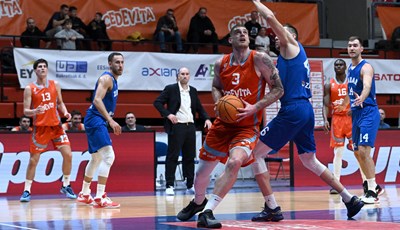
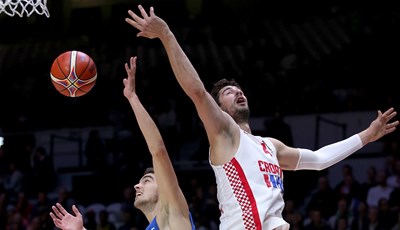
Tomić prvo ime Joventuta u porazu u gostima kod Barcelone
7 sati•Španjolska košarka
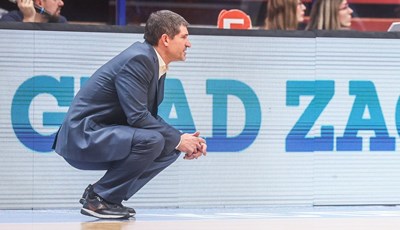
Cibona gostuje u Zadru: 'Moramo biti spremni odgovoriti na čvrstu igru u reketu'
9 sati•SuperSport Premijer liga

Durant vodio Rocketse do pobjede u Denveru, Matkoviću četvrta pobjeda u nizu s Pelicansima
19 sati•NBA
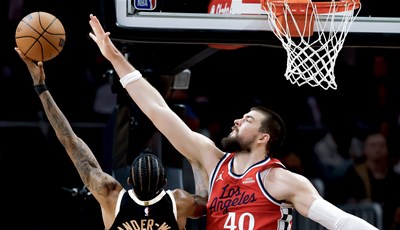
Ivica Zubac ozlijeđen, Clippersi ipak uspjeli prekinuti seriju poraza
20 sati•NBA

Izvrsni Mario Hezonja predvodio Real Madrid do pobjede, Božić vrlo dobar u porazu Granade
1 dan•Španjolska košarka
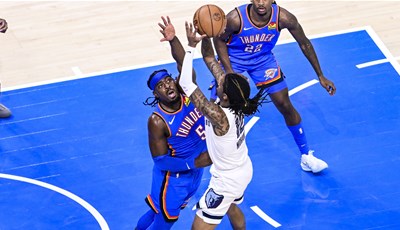
Bullsi slavili kod oslabljenih Cavaliersa, Thunder upisao tek treći ovosezonski poraz
1 dan•NBA
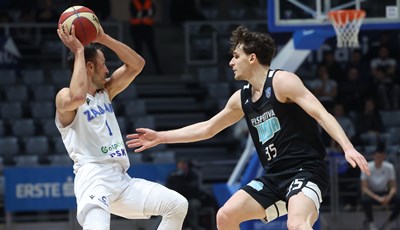
Zadrani uz vrlo malo rotacija upisali četvrtu pobjedu u ABA ligi
2 dana•ABA liga

Bizarna utakmica na Poljudu, Hajduk s devetoricom sačuvao pobjedu protiv Vukovara!
11 sati•Nogomet

Težak sudar u Bundesligi, Vušković prvi pružio pomoć veznjaku Eintrachta
15 sati•Fanatik

Od naranči do keramike i europske slave: Villarreal - liliputanac koji ruši nogometne careve
17 sati•Nogomet

Velika pobjeda Zrinjskog usred Banja Luke, Šakota heroj Plemića!
10 sati•Nogomet

Kronologija: Hajduk izvukao pobjedu protiv Vukovara 1991!
13 sati•Nogomet

Kronologija: Rijeka slavila protiv Gorice na Rujevici
10 sati•Nogomet

Carević: 'Tri minute nadoknade nisu normalne, a Rijeka nije imala izrazite prilike'
7 sati•Nogomet

Aston Villa u sjajnoj formi dočekuje Manchester United kojem pobjeda donosi skok u poretku
14 sati•Nogomet




